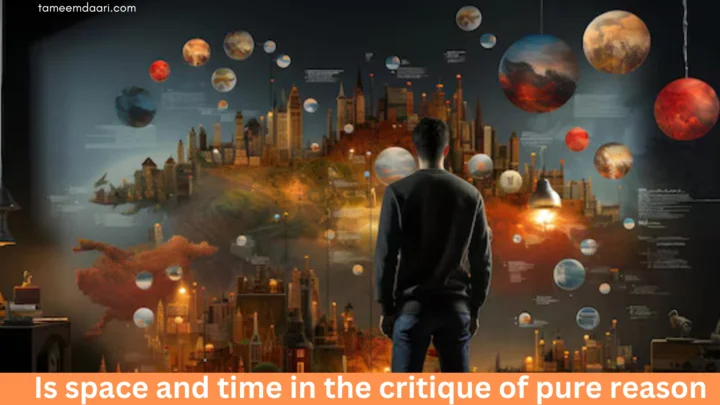In Immanuel Kant’s Critique of Pure Reason (1781/1787), space and time are foundational to his transcendental philosophy. Is space and time in the critique of pure reason They are not empirical concepts derived from experience but pure forms of intuition (Anschauungsformen) that structure all human perception. Here’s a breakdown of their role and significance:
Space and Time as A Priori Forms of Intuition
Kant argues that space and time are necessary preconditions for experiencing objects. They are not “things” that exist independently (as Newton believed) or mere relational concepts (as Leibniz claimed). Instead:
- Space is the form of outer sense, organizing sensory data into spatial relationships (e.g., objects appearing “beside” or “outside” one another).
- Time is the form of inner sense, structuring the succession of thoughts, sensations, and mental states (e.g., the order of “before” and “after”).
Key Point:
Without space and time, we could never perceive or conceptualize objects or events. They are the “lens” through which humans experience reality.
The Transcendental Aesthetic: Kant’s Arguments
In the Transcendental Aesthetic (the first major section of the Critique), Kant defends the a priori nature of space and time through two types of exposition:
Metaphysical Exposition
- Space:
- Not an empirical concept (we presuppose space to locate objects).
- A necessary representation (we cannot imagine the absence of space).
- Underlies geometry (e.g., synthetic a priori truths like “two points define a line”).
- Time:
- Not derived from experience (we perceive events in time, not time itself).
- Necessary for arithmetic and the concept of succession (e.g., counting requires temporal order).
Transcendental Exposition
- Space and time make mathematics possible:
- Geometry relies on spatial intuition.
- Arithmetic depends on temporal succession (e.g., “1 + 1 = 2” assumes a sequence).
Implications for Kant’s Transcendental Idealism
Space and time are subjective conditions of human sensibility, not properties of “things-in-themselves” (noumena). This leads to Kant’s distinction between:
- Phenomena: The world as we experience it, structured by space, time, and categories (like causality).
- Noumena: Reality as it exists independently of human perception (unknowable to us).
Example:
We perceive a tree in space and over time, but the tree-in-itself (noumenon) transcends these forms.
Contrast with Empiricism and Rationalism
- Empiricists (e.g., Locke, Hume): Space and time are derived from sensory experience.
- Rationalists (e.g., Leibniz): Space and time are abstract relations between things.
- Kant’s Revolution: Space and time are neither empirical nor relational but a priori frameworks that make empirical knowledge possible.
Criticisms and Legacy
- Objections: Later philosophers (e.g., Hegel, Schopenhauer) questioned whether space/time are truly a priori or culturally conditioned.
- Modern Relevance: Kant’s ideas influenced Einstein’s relativity (though Einstein rejected a priori space/time) and debates in cognitive science about innate perceptual structures.
Key Quotes from the Critique
- Space:”Space is not an empirical concept which has been derived from outer experiences.” (A23/B38)
- Time:”Time is a necessary representation that grounds all intuitions.” (A31/B46)
Why This Matters
Kant’s theory of space and time anchors his larger project: showing how synthetic a priori knowledge (e.g., mathematics, physics) is possible. By grounding experience in these forms, he reconciles empiricism and rationalism while limiting metaphysics to the bounds of possible experience.
Conclusion
Immanuel Kant’s treatment of space and time in the Critique of Pure Reason presents them as a priori forms of intuition that shape all human perception and experience. Kant challenges both empiricist and rationalist views, arguing that space and time are not derived from experience or abstract relations between objects but are necessary conditions that enable us to perceive and conceptualize reality. His transcendental idealism further distinguishes between phenomena, which are shaped by these forms, and noumena, which exist beyond human perception. While Kant’s ideas have been critiqued by later philosophers, his work laid the foundation for modern debates in epistemology, philosophy of science, and cognitive science, influencing later thinkers, including those in the fields of mathematics and physics.
